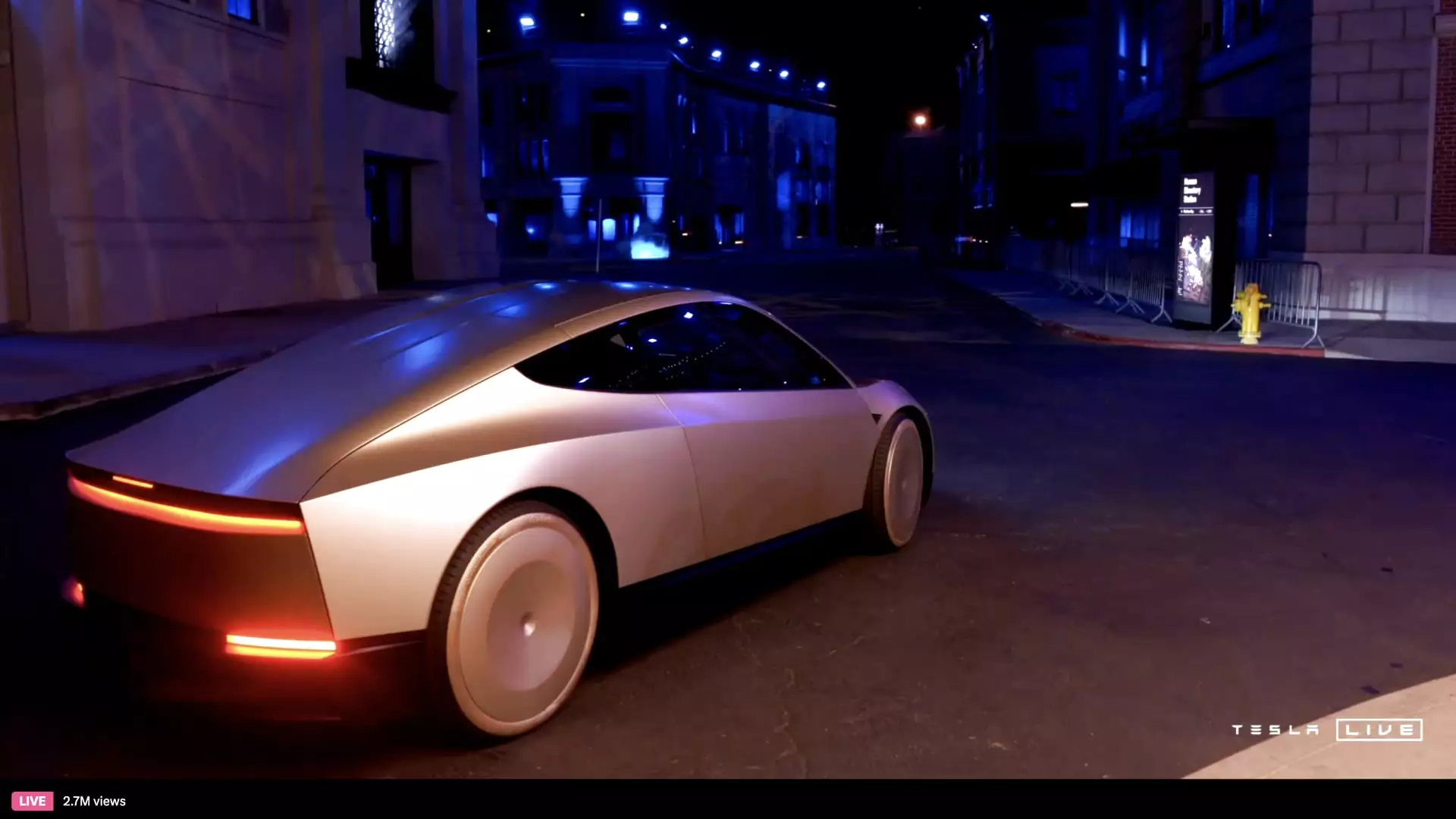The autonomous vehicle industry has long been marked by exhilarating announcements and grand fantasies, yet it often falters under the weight of reality. In a recent presentation, Tesla CEO Elon Musk unveiled the company’s latest initiative: the Cybercab, emphasizing his ambitious plans for self-driving technology. As an analysis of this event reveals, Musk’s continual promises raise critical questions about Tesla’s technological advancements and its traction in the ever-evolving automotive market.
Unveiling the Cybercab at the Warner Bros. studio in Burbank, California, Musk showcased a futuristic vehicle devoid of traditional controls like steering wheels and pedals. His vision of a world where vehicles are fully autonomous has been at the forefront of Tesla’s narrative for years. With plans to sell the Cybercab for under $30,000 and hopes to enter production before 2027, Musk presented a tantalizing concept aimed at redefining urban transportation. Alongside the Cybercab, Musk introduced the Robovan—an autonomous electric vehicle designed to accommodate up to 20 passengers or facilitate goods transportation.
The idea of inductive charging, allowing vehicles to recharge without plugging in, adds an innovative edge to Tesla’s autonomous vision. This feature aligns with the sleek, user-friendly experience that Musk has consistently touted. However, the question lingered: Will these innovative features suffice to bring his grand ambitions to a reality?
Such optimism, however, is juxtaposed against a backdrop of unmet expectations. Musk has a history of setting ambitious targets that often slip through the fingers of time. In 2015, he promised full autonomy within three years, yet progress towards that goal has failed to materialize. Musk’s declarations have frequently set the stage for investor excitement but have consistently resulted in disappointment as deadlines come and go without fulfilling projections.
For instance, in 2019, Musk imagined a world filled with one million robotaxi-ready Teslas by 2020, only for the timeline to prove overly ambitious. While he maintains that the company will ultimately deliver on its assertions, skepticism remains among both investors and consumers, particularly in an industry where prototyping and testing demand extensive time and resources.
As Tesla propels forward with its latest initiatives, the reality of achieving full autonomy must be confronted. The current Full Self-Driving (FSD) system requires human supervision, and while Musk anticipates unsupervised FSD operating in Texas and California imminently, the challenge of ensuring safety and reliability is paramount. Autonomous vehicles face regulatory scrutiny, technological barriers, and the daunting task of consumer trust. The prospect of releasing vehicles into an uncertain market raises concerns about liability, safety, and public reception.
The nuances surrounding driving regulations and the need for comprehensive testing highlight the hurdles that lie ahead. Staying competitive in an industry where traditional automakers and tech companies alike are investing heavily in autonomous technology necessitates substantial progress on Tesla’s part.
Musk also characterized the unveiling of the Cybercab as a “product launch,” yet the event raised questions about its substance. The glitzy event, where attendees experienced rides in a controlled environment, may serve as an enticing marketing tactic rather than showcasing fully functional autonomous vehicles ready for the general public. Associating product launches with test rides can create an illusion of readiness even when considerable development may still be necessary.
While the enthusiastic atmosphere at the event might suggest a thriving future for Tesla, it is pivotal for stakeholders to remember that the showcase was merely a promotion rather than a substantive demonstration of capability. Enthusiasm must be tempered with realism, especially as Musk’s penchant for rhetoric can sometimes overshadow the practical challenges facing the company.
While Tesla’s unveiling of the Cybercab and Robovan presents an exciting glimpse into the future of transportation, the weight of previous promises and the challenges of ensuring full autonomy warrant a cautious perspective. Musk’s ability to get everyone on board with his vision has been steadfast, yet the industry awaits tangible results to validate the years of anticipation surrounding autonomous vehicles. Whether this latest venture heralds a new era of innovation or falls into the pattern of past missteps remains to be seen. As the landscape continues to evolve, one must question whether Tesla can transform hype into reality or remain ensnared in the cycle of promise, followed by postponement.

Leave a Reply